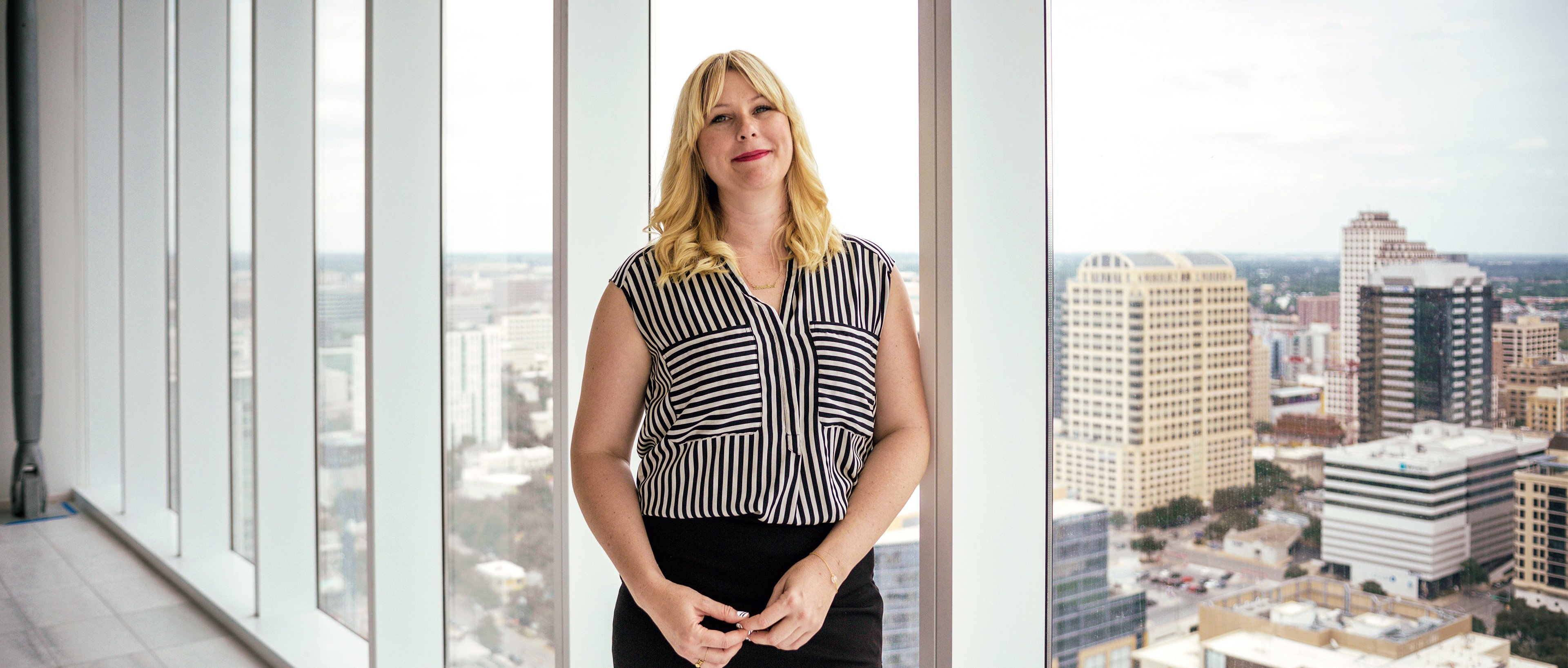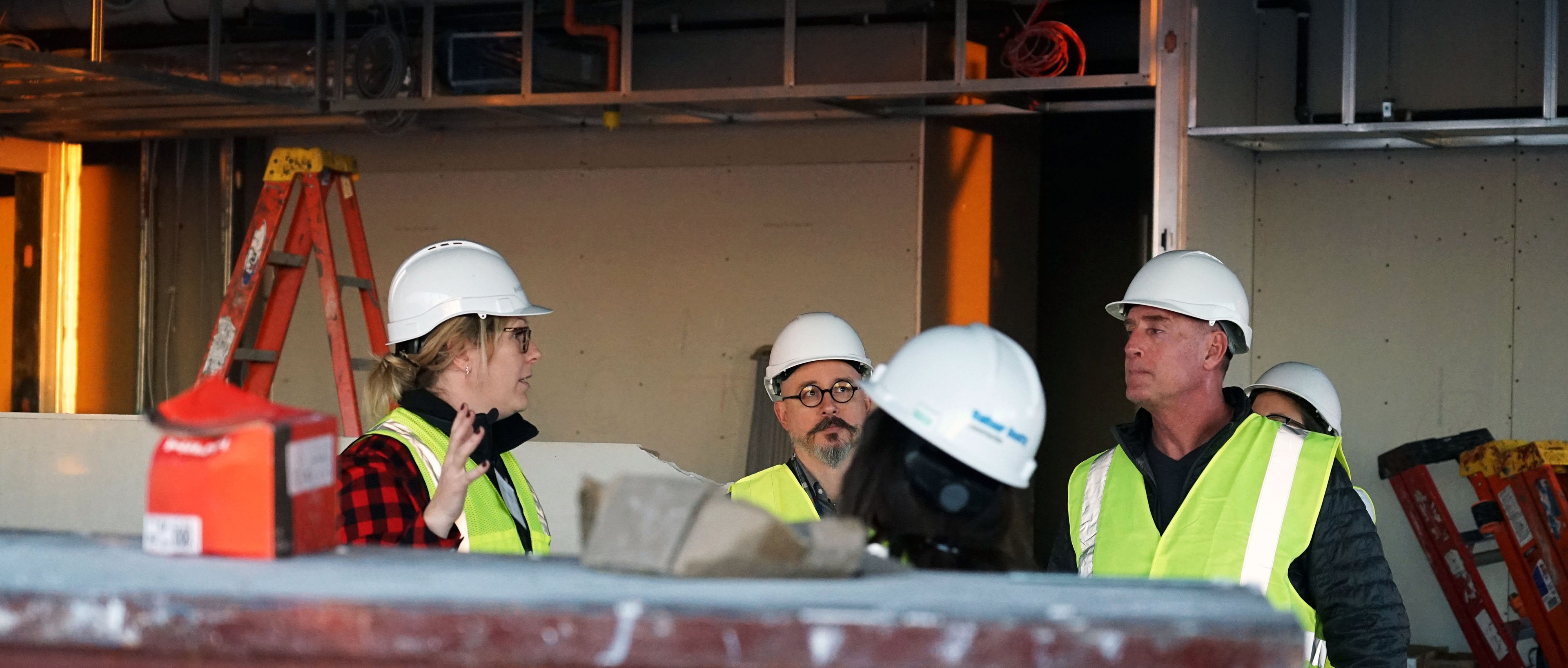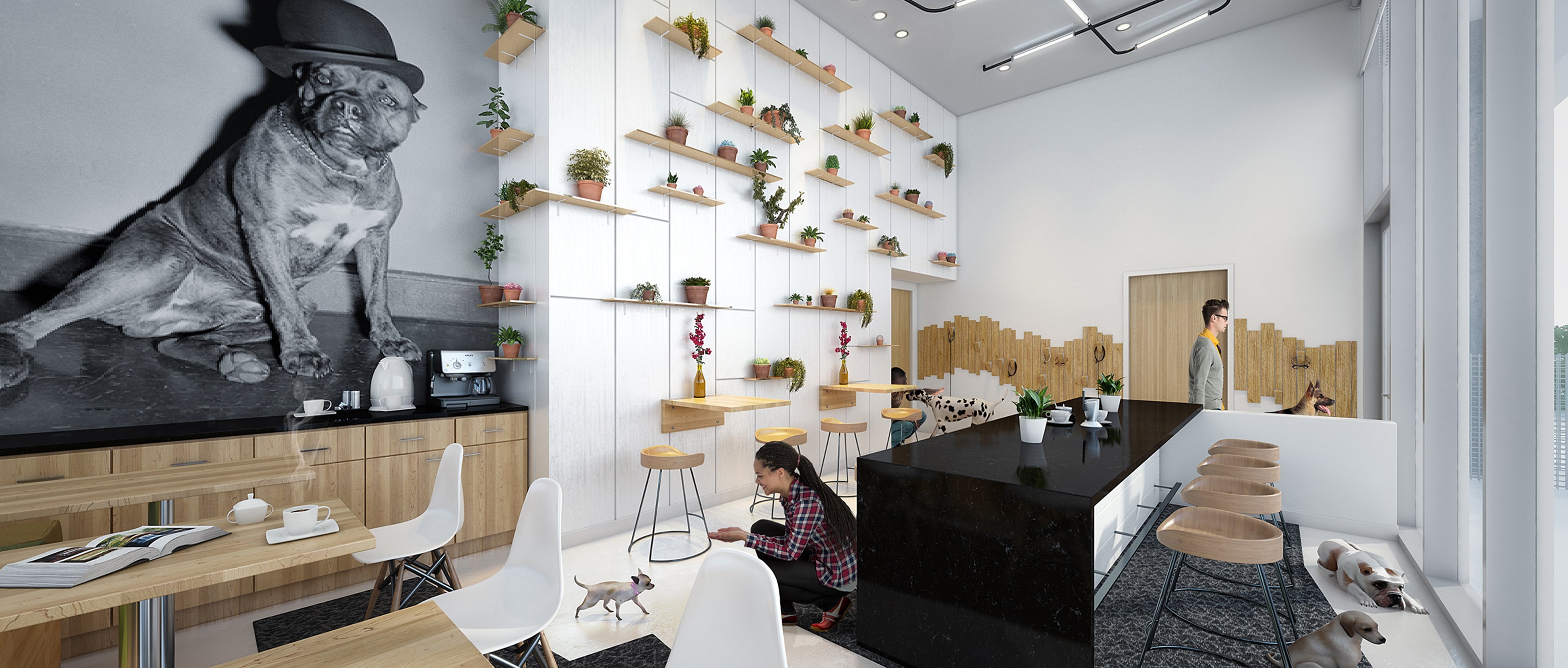It’s no surprise in a city whose motto is “Keep Austin Weird” that a striking downtown building, very fittingly named The Independent, would earn a nickname like “The Jenga Tower”. Perhaps it’s fitting that the architect Erin Nies, whose own M.O. is giving spaces unique identities, played a key role in this distinctive project.
Erin generously shared some time with Ketra to talk about her journey as an architect, insights into the evolving design scene, what she sees on the horizon, and the tricky challenge of balancing Old and New Austin in her work.

Erin Nies, Founder of Studio Llou.
1. What brought you to the field of architecture, and to Austin?
Architecture is something I picked in junior high, and it worked out. I feel pretty lucky to have known at 12 years old what would make me happy and keep me inspired for the rest of my life. That early focus gave me a leg up — I took drafting courses in high school and went right into a 5-year program for college.
After graduation, I went to work for a boutique design firm in L.A., doing a lot of commercial interiors. I visited Austin on vacation 15 years ago, fell in love with the city’s creative scene and outdoor recreation, and then made my move less than two years later. I worked at a few commercial firms in Austin before landing at Rhode Partners in 2012.
Earlier this year, I came to one of life’s “now or never” intersections and decided to take a leap and start my own firm. I’ve worked for a lot of great people who have taught me so much along the way; I’m still growing and learning every day. It’s really exciting, because now design doesn’t just stop at a building — I’m designing my firm, how it’s structured and functions, and ultimately my future.
2. Speaking of excitement, what’s the most exciting part about all the rapid development in Austin?
I grew up in L.A., at that time, downtown was deserted after 5 o’clock. Effectively, in an already car-centric city, there was no “downtown”. Where you worked, lived and socialized was always separated by a car ride. Austin has definitely built out its borders, but a lot of people are choosing to stay in the city. It’s exciting to see that trend of “building up” and creating a vibrant downtown. It really makes the area, and in turn, the people feel connected.
3. On the flip side of that rapid growth trend, how do you balance the “Old Austin” with the new?
One thing that Austin is really great at is holding onto and taking care of the small businesses that have a unique Austin identity. People in Austin are really proud of the city and there’s an almost unspoken agreement to protect and preserve its energy and integrity. It’s what drew me to Austin. Even out-of-town developers seem to be more sensitive to what people will respond to here — that authenticity of homegrown, small business. Understanding that and keeping it as part of the throughline as you build up is definitely a big piece of the design challenge.

I actually installed Ketra lighting above our project table so that I could see and show how various temperatures of light affected finishes. I would do that all the time for clients so that lighting wasn’t just some number on a sheet, but something they could actually experience and feel.
4. What was your role in the creation of The Independent, aka the Jenga Tower?
I was Head of Interior Architecture and the Lead Interior Designer for Rhode Partners when we were building The Independent. The exterior was very unique — we didn’t want to develop something that looked like it could be an apartment building in just any city. I wanted this to carry through to the interiors as well, a different approach from what had been done in Austin before. We didn’t want to compete with the form of the building, so we decided to put the structure on display by bringing materiality to the forefront. For example, we didn’t choose a lot of wall coverings; instead we went with lots of exposed concrete that ties back into the exterior. We also paid careful attention to the artwork and furnishings we used. It’s curated to give each space an individual voice while working in harmony with the building.
5. When you’re creating a project on the scale of The Independent, how many other types of professionals do you collaborate with, and what are their roles?
One of the best things about what I do is that I get to work with different people on every project and every day is new and different. At (my firm) Studio Llou, we pride ourselves on being holistic, viewing the interior and the exterior of a project seamlessly. We sit down with the client, architect, and contractor to figure out all aspects of the project, and how that will impact the interior that we curate.
With The Independent, I was involved with everything from interior design to procurement, so I collaborated with a lot of different specialists — from lighting specialists and furniture artisans to artists and art installers — even professional plant installers. In fact, one of my favorite rooms in that building is the dog lounge, where we commissioned tabletop terrariums to fill up some very shallow shelves on the wall.

6. You mentioned working with lighting specialists — how does light inform your work?
It all starts with light, doesn’t it? How anything appears is based on its relationship to light. On the interior side, each project is its own entity. Making a space look a certain way comes from light and its relationship to materiality. I approach lighting like I would a sculpture — I integrate it into the design process and try and sculpt it with the form and materials I add.
One of the things that’s really important is how the temperature of the light affects the way that people feel in the space. All lighting is mood lighting. However, it’s sometimes hard to break down lighting technicalities for a developer or client. When I was at Rhode Partners, I actually installed Ketra lighting above our project table so that I could see and show how various temperatures of light affected finishes. I would do that all the time for clients so that lighting wasn’t just some number on a sheet, but something they could actually experience and feel. At Studio Llou, part of our mission statement is to “make sure the people inside the building matter as well” — using Ketra in offices for its ability to transform throughout the day and mimic sunlight can help us achieve this.
7. The design scene tends to be heavily associated with New York and San Francisco — how does Austin fit into the mix?
I definitely see things changing. In places like New York, there are a lot of sleek, sophisticated interiors that feel very high end. Same thing with LA/San Francisco, whereas when Austin was younger, it had a much more “attainable” vibe. What I’m seeing now is that Austin is elevating its design. Refining yet remaining comfortable in its own character while adopting some of that sleeker NY/LA detailing. It’s more mature now but still holds onto that warm, lived-in feeling. At the same time, I see places like New York coming back down and moving away from imposing marble and coldness. The styles are growing closer to each other.
8. Are there any other exciting trends that you see happening?
One of the really fascinating things to me is the effect that widespread access to design information is having. People can follow what’s cool at any location at any given moment, so there’s a lot of great local experimentation being driven by access to global trends. Great ideas come from everywhere — people are sourcing from smaller manufacturers and discovering different inspirations besides just building on last year’s trends. That being said, I also love going out and experiencing the whole Austin design vibe, too.
It’s exciting that people are willing to take risks and focus on that individual feel. I’m surprised on a daily basis how other people’s thought processes revolve around design.
Interested in learning more about Erin’s thought process around design, and her firm’s capabilities? See Erin's Studio Llou online. And if you enjoyed this post, check out our previous interviews with Shannon Bush of ServiceTech and lighting designer Erin Dreyfous of Tillotson Design Associates.
24/7 Technical Support:
1-844-LUTRON1 (588-7661)
lightingsupport@lutron.com
Customer Service:
Monday-Friday 8am- 5pm EST
1-844-LUTRON1 (588-7661)
The Ketra logo, Ketra, TruBeam, Color Lock, and Calibration360 are trademarks or registered trademarks of Lutron Electronics Co., Inc. in the US and/or other countries.
©2025 Lutron Electronics Co., Inc. All rights reserved.
Get inspired with all the best from Lutron and Ketra: exclusive news, project features, and more.